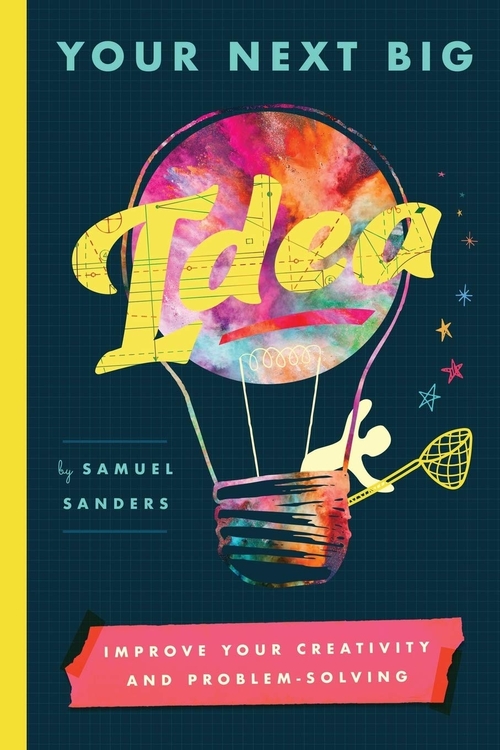
With drawings, diagrams, and dynamic brain teasing techniques, author and entrepreneur Samuel Sanders presents new ways to look at our habits and problems and create new patterns and solutions, whether in professional or personal life, in Your Next Big Idea: Improve Your Creativity and Problem Solving.
Sanders cites four skills to be examined and developed in the course of his interactive book: innovation, creation, problem solving, and ideation – being “an ace at coming up with ideas.” He asserts that once a reader completes his guide, s/he will be able to come up with 100 meaningful ideas to incorporate into private and public life, which is a bold claim, but this sense of boldness makes the book both inspiring and fun – especially when compared to the sometimes-staid books on the same topic.
He invites readers to use his book proactively, with the extra pages provided or a separate notebook to record concepts arrived at in the process. We must first identify the issues that cause us problems; often these can be recognized when we say we “hate” something. He offers examples – the simple portrait of a woman getting up and preparing for work shows many small dysfunctions: she’s overtired, she doesn’t have things arranged well in her home, her commute is too complicated, and so on. These moments are particularly engaging – placing his concepts into real-life situations, rather than only relying on abstract ideas of positivity.
From such case studies, Sanders advises we must always ask questions, moving from “when” and “where” to the deeper “how,” to the all-important “why,” which can be amplified by being asked three times. Identifying a problem leads to solution seeking, which can be a shared “brainstorming” operation, as in an office setting. This will bring about and foster new ideation, both individual and shared. Once the process is complete, the author encourages readers to continually refresh their skills of questioning and creating as described in the manual.
Sanders, who has founded many companies based on the ideas shown here, has made his book an example of those ideas, in that it gives many exercises to stimulate new ways of thinking, with memorable, graphic illustrations. One such is the picture of a parking lot with cars parked in what seem oddly numbered spaces; the trick is to turn the picture upside down so that the numbers then fall in the correct order. He gives a thought-provoking exercise in which the reader imagines her/himself as an alien visiting Earth and trying to solve what seem like some of its obvious problems such as traffic flow.
As such, the book almost has a feel of the exercises at a children’s museum, except aimed at adult problems. While this could come off as overly simplistic, or even juvenile, the exercises are effective for a wide range of issues – acting as a kind of team-building exercise on a personal level. There are questions with spaces to fill in creative answers, not meant to be “correct” but to reflect one’s personal perceptions. In this way, the book itself is a learning tool that can be used more than once to revive the information it contains.
As many books bombard the reader with ideas, without a real sense of implementation, Your Next Big Idea stands out in the field. Though his book is primarily designed for those in business and marketing, it can be useful to anyone seeking a more hands-on approach to self-improvement.
Book Links
STAR RATING
Design
Content
Editing
Get an Editorial Review | Get Amazon Sales & Reviews | Get Edited | Publish Your Book | Enter the SPR Book Awards | Other Marketing Services























Leave A Comment